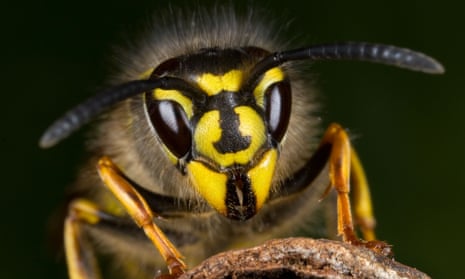Fear of wasps has always seemed to me irrational, but since inadvertently standing on a wasps’ nest two weeks ago my opinion has been revised. Deep in a local wood and stopping to admire a fungus on a log pile, I was alerted by a deep buzzing to the fact that both trouser legs were filling up with wasps.
Not content with stinging both legs, the workers also attacked my face and neck, as well as the dog. They were still stinging both of us when we reached the car half a mile away and followed us into the vehicle.
This alarming and painful experience led to some research. According to most literature, worker wasps are benign most of the time, but particularly aggressive when defending young queen wasps as they are about to set off on the annual mating ritual. But the same sources suggest colonies of wasps should have done all that and begun to die off by November because of cold weather and starvation.
Since the incident there have been some moderate frosts, but observation of the nest, from a safer distance, shows a lot of wasps going in and out on hunting expeditions as if it is still summer.
It is possible to understand how they have survived the cold weather as the nest is deep in a pile of wood and leaves, but they should have starved to death by now.
This is because, as part of their complex lifestyle, wasps need to feed from their own grubs to survive. But there should not be any left by November. Perhaps climate change is lengthening their life cycle.

Comments (…)
Sign in or create your Guardian account to join the discussion